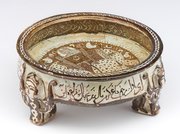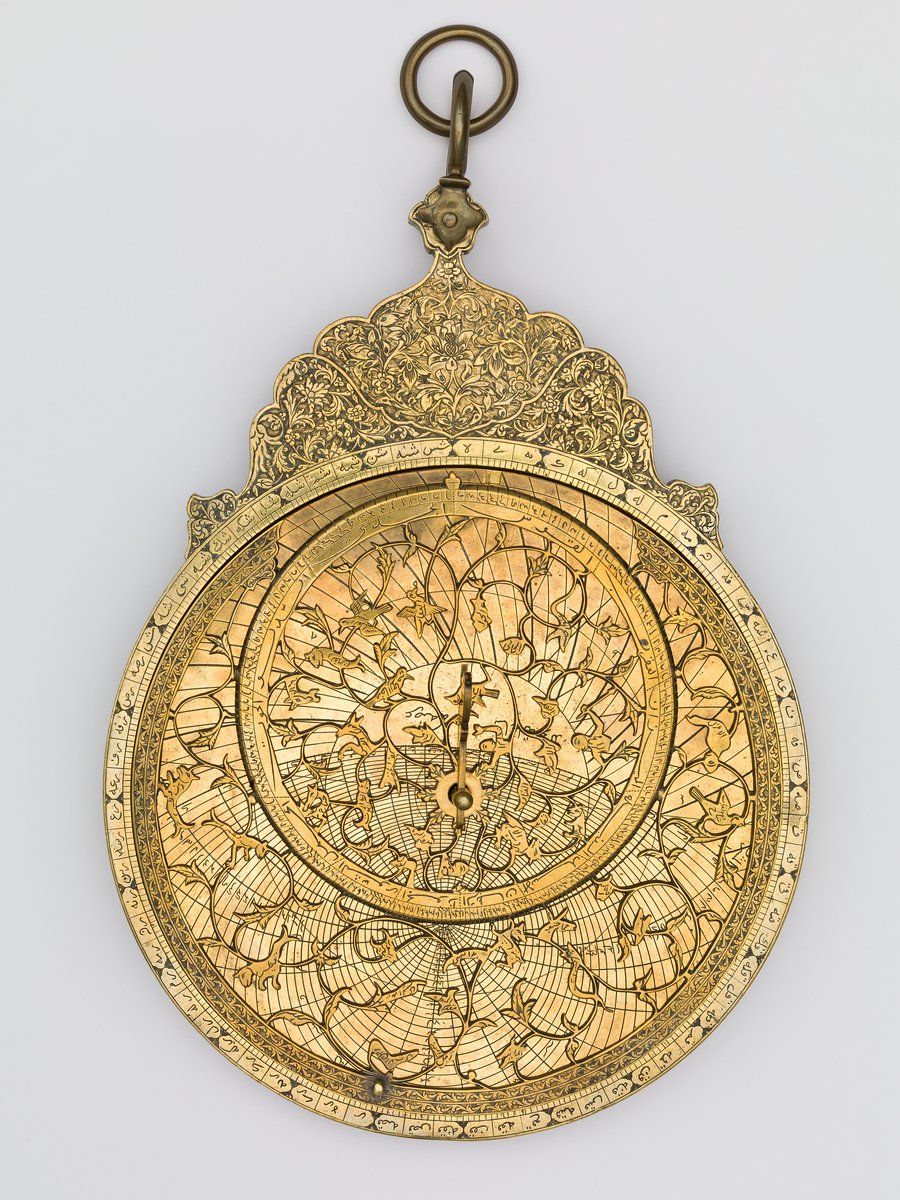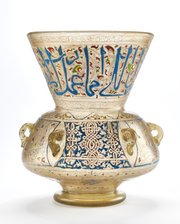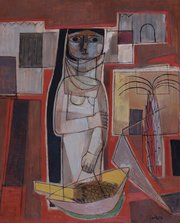
Planispheric Astrolabe
Museum of Islamic Art
- Title:
- Planispheric Astrolabe
- Artist:
- Hasan Husni Al-Husayni Al-Kirmani
- Maker:
- Hasan Husni Al-Husayni Al-Kirmani
- Production place:
- Kerman
- Date:
- 1677 - 1678
- Period:
- Safavid
- Title:
- Planispheric Astrolabe
- Artist:
- Hasan Husni Al-Husayni Al-Kirmani
- Maker:
- Hasan Husni Al-Husayni Al-Kirmani
- Production place:
- Kerman
- Date:
- 1677 - 1678
- Period:
- Safavid
- Material:
- Copper alloy, Gold, Black compound
- Technique:
- Casting, Gilding, Engraving, Inlaying, Openwork, Riveting
- Dimensions:
- 30.8 × 19 × 4
An astrolabe is an early scientific instrument representing a two-dimensional model of the celestial sphere. These instruments trace back to the Hellenistic period between 220 and 150 BCE but became popular as complex tools in Europe and the Islamic world from the early Middle Ages.
Constructed as inscribed discs, usually made of metal, such as brass or iron, astrolabes were used for measuring time (the time of the day and night, the month or the year), determining altitude and latitude or for observational purposes. They were, therefore, extremely useful in solving problems in the fields of geography, surveying and astronomy. This type of astrolabe, known as a ‘planispheric astrolabe’, allowed astronomers to calculate the position of the sun and other prominent stars.
This gilded planispheric astrolabe has a series of unusual decoration: In addition to the typical leaf or star-shaped pointers, there are also a number of birds, horses, fish, sea monsters, and human figures. It was made by Hasan Husni al-Husayni al-Kirmani in Iran (Kirman) in the year 1088 AH (1677-1678 CE) during the Safavid period and is the only known instrument made by this craftsman.



